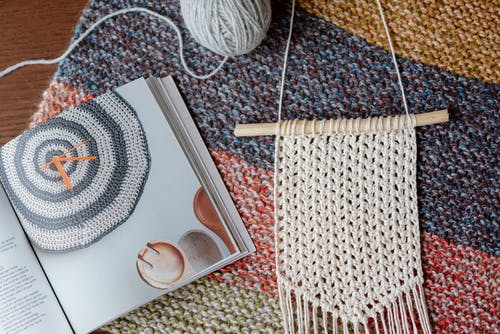For any knitter or crocheter, the ability to join two strands is a vital skill. Knowing how to join two yarns perfectly is a useful ability, whether you’re running out of yarn in the middle of a task or purposefully changing colors.
How to Join Yarns Together
There are various methods to join two yarns together, but some are easier than others. Some of the most common techniques and guidelines are given below.
1. Knotting
Knotting two yarns together is the quickest method of joining them. While this method is quick and easy, your finished material could have an obvious bump. Just tie a knot at the beginning and end of each yarn, leaving a few inches of tail on each, to bind two yarns together. Then use the new yarn to proceed with knitting or crocheting, remembering to weave in the tails afterward.
For delicate projects such as socks, shawls, and lacework, fingering weight yarn is best due to its fine texture. It’s important to consider fiber material, color, and texture when choosing fingering weight yarn for a project to guarantee that it fits the desired use and accomplishes the expected results. Click here to learn more about different methods and different yarns.
2. Weaving
Another method to join two yarns is to weave the ends of the yarn in. Although it takes longer than knotting, this technique produces a seamless join that will be seen once your job is finished. A yarn needle must be threaded with the end of the old yarn to weave in the ends. When the old yarn ends and the new yarn begins, weave the needle in and out of the stitches and then repeat with the new yarn. Weave at least three inches of each yarn to prevent it from unraveling.
If you want to weave a blanket, bulky yarns are recommended. Because they are thicker, they can be quicker to knit or crochet and are good for beginners that like to see progress quickly.
3. Spit Splicing
Spit splicing is a method for joining two yarns using moisture. It’s a fantastic method for joining wool or other animal fibers, but fibers other than synthetic ones will also work. Begin by soaking the ends of both yarns before you spit splice. After that, fold the damp ends over and firmly press them together with your hands. The fibers will bind together due to friction and moisture, producing a smooth join. Trim any excess yarn once the join is dry.
4. Russian Join
The Russian join is a more difficult way, but it creates a very strong join that will not unravel. By weaving the old yarn’s end back through the new yarn for a few inches, you can create a Russian join. Then, take the end of the new yarn and thread it onto a second needle, and weave it back through the yarn while overlapping the old yarn in the other method. Trim the excess yarn after weaving the two yarns together using the two needles.
5. Magic Knot
A strong, seamless join can be made using the magic knot method without using a yarn needle or extra weaving. Overlap the ends of the two yarns by a few inches before tying a magic knot. Both strands should be tied in a loose knot before a second knot is made with the loose ends. To guarantee the knots are secure, thoroughly tug on each yarn after tightening the knots. After cutting the excess yarn, you’re finished.
To begin knitting, you need a collection of yarn. Yarn collections or urth yarns can give ideas and a sensible method to access various yarns that fit together and complement each other.
Final Thoughts
Knitting or crocheting demands the ability to link two yarns. Knowing how to join yarns easily will improve the appearance of your finished piece, whether you choose to weave, spit splice, Russian join, or use the magic knot. Try various approaches to identify which suits you and your project best. You’ll instantly turn into an expert at joining yarns with practice.



